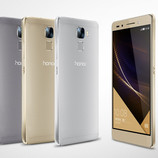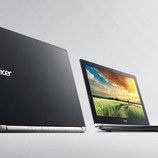High-end phone for a mainstream price. The Mi 4s makes a strong case for spending $300 USD on a new smartphone instead of $600 or $700 for a top-of-the-line model. Find out how the Xiaomi compares to both mainstream and flagship competitors.
Xiaomi has been slowly building up from offering inexpensive budget smartphones to more mid-range and high-end models that tend to sell at much higher margins. This jump in quality is apparent when taking a closer look at the Redmi 2 versus its much improved Redmi 3 successor.
The 5-inch Mi 4s is the updated version of the Mi 4 in the same manner as the iPhone 6s is to theiPhone 6. For Xiaomi, however, the Mi 4s is more than just an internal upgrade as the chassis is now thinner and with more features not previously available in the series.
Main competitors to the Mi 4s include the OnePlus X, Asus Zenfone 2, and Google Nexus 5Xconsidering the $300 to $350 price range of the smartphone.
- Xiaomi Redmi 2
- Xiaomi Redmi 3
-
Case
The Mi 4s is available in Black, White, and Gold color options. Our Gold test unit gives off a luxurious luster with at least three different types of surfaces making up the chassis. The glass-covered front is completely flat with almost no rise around the edges and corners. The rounded aluminum sides of the phone are a slippery matte finish with striped chrome-cut edges and corners for glossy accents. Meanwhile, the back of the phone utilizes another smooth layer of glass similar to the recent Galaxy S6 series, but with a cross-diamond pattern underneath to avoid what would have otherwise been a plain plastic look. Even the camera and LED Flash modules are recessed onto the same plane as the glass for a completely flat surface. It's clear that Xiaomi had invested much more in the aesthetics of the design compared to its older generation of plastic smartphones.Workmanship is nearly perfect around the edges and corners where the different materials meet. Unfortunately on our test unit, we are able to notice a small and depressible gap between the back cover and edge of the smartphone. While this may be more common on smartphones with removable back covers, designs with non-removable battery packs like the Mi 4s are expected to have a much more solid seal around its edges. The potential for gaps is a drawback from not using a unibody design.Overall rigidity is above average with no creaking or cracks when attempting to twist from the sides or applying pressure its center. A bit of bending and warping is possible with a moderate amount of force, but nothing extensive enough to be a cause for concern.- When comparing its size to other 5-inch smartphones, the Mi 4s is thinner and smaller than the Honor 5X and even thinner than the Galaxy S7 by one-tenth of a millimeter. The OnePlus X comes in even thinner than the Mi 4s and with a faster Snapdragon 810 SoC at the cost of much higher surface temperatures. Xiaomi still has the edge in weight as its model is one of the lightest 5-inch smartphones available at 133 grams.
Connectivity
Micro-USB is slowly but surely being phased out in favor of USB Type-C. In this case, the Type-C port is limited to standard USB 2.0 speeds like on the OnePlus 2, so the only benefit here is the hassle-free reversible end. Otherwise, the usual 3.5 mm earphone port is located next to the IR source on top.There is no integrated NFC available, so contact-less payment is beyond the reach of the Mi 4s.Software
Communication & GPS
DiscussionTelephone & Voice Quality
Cameras & Multimedia
Input Devices
Display
Distribution of brightness440.2
cd/m²488.3
cd/m²471.6
cd/m²445.2
cd/m²488.2
cd/m²482.7
cd/m²431.5
cd/m²498.7
cd/m²490.7
cd/m²X-Rite i1Pro Basic 2Maximum: 498.7 cd/m² Average: 470.8 cd/m² Minimum: 0.763 cd/m²
Brightness Distribution: 87 %
Center on Battery: 488.2 cd/m²
Contrast: 869:1 (Black: 0.562 cd/m²)
ΔE Color 3.48 | 1.01-23.34 Ø6.8
ΔE Greyscale 3.06 | 0.79-16.8 Ø7.1
Gamma: 2.4Xiaomi Mi 4s
5, 1920x1080Google Nexus 5X
5.2, 1920x1080Asus Zenfone 2 ZE500KL
5, 1280x720HTC One A9
5.0, 1920x1080OnePlus X
5.0, 1920x1080Screen 32%33%20%-95%Brightness Center 488.2 503 3%467 -4%346 -29%312 -36%Black Level * 0.562 0.38 32%0.3 47%Contrast 869 1324 52%1557 79%Colorchecker DeltaE2000 * 3.48 2.09 40%3.28 6%1.55 55%6.28 -80%Greyscale DeltaE2000 * 3.06 2.12 31%1.89 38%2.05 33%8.24 -169%Gamma * 2.4 2.27 2.21 2.15 2.12 * ... smaller is betterDisplay Response Times
↔ Response Time Black to White 21.6 ms ... rise ↗ and fall ↘ combined ↗ 6 ms rise ↘ 15.6 ms fall The screen shows good response rates in our tests, but may be too slow for competitive gamers.
In comparison, all tested devices range from 0.8 (minimum) to 240 (maximum) ms. » 12 % of all devices are better.
This means that the measured response time is better than the average of all tested devices (29.1 ms).↔ Response Time 50% Grey to 80% Grey 36.4 ms ... rise ↗ and fall ↘ combined ↗ 12.8 ms rise ↘ 23.6 ms fall The screen shows slow response rates in our tests and will be unsatisfactory for gamers.
In comparison, all tested devices range from 0.9 (minimum) to 92 (maximum) ms. » 28 % of all devices are better.
This means that the measured response time is better than the average of all tested devices (42.6 ms).Performance
The Snapdragon 808 is a relatively new high-end processor from Qualcomm that made its debut on last year's flagship LG G4 and is only now trickling down to mainstream devices like the Mi 4s. According to CPU-Z, the hexa-core SoC can run as slow as 384 MHz for power-saving purposes and up to 1.82 GHz when applications demand it. Coupled with the system's 3 GB RAM, the Mi 4s is carrying a hefty amount of power for its class.Multi-core CPU benchmarks rank the Xiaomi phone alongside systems like the Nexus 6, Nexus 9, and LG G4 while being consistently behind the Galaxy S6 and the OnePlus 2 with the Exynos 7420 and Snapdragon 810 SoCs, respectively. Thus, raw performance sits comfortably between mainstream and pricier flagship smartphones.Linpack Android / IOS | PCMark for Android | AnTuTu Benchmark v6 | Geekbench 3 | Google V8 Ver. 7 |Browsermark | Sunspider | JetStream 1.1 | Mozilla Kraken 1.1 | Octane V2 | WebXPRT 2015 | Vellamo 3.x |Quadrant Standard Edition 2.0 | Smartbench 2012 | PassMark PerformanceTest Mobile V1Linpack Android / IOS Single Thread OnePlus 2 Samsung Galaxy S6 Edge Xiaomi Mi 4s Motorola Moto X Play Motorola Moto G 3. Gen 2015 XT1541 Bluboo Xtouch Multi Thread Samsung Galaxy S6 Edge OnePlus 2 Xiaomi Mi 4s Motorola Moto X Play Bluboo Xtouch Motorola Moto G 3. Gen 2015 XT1541 * ... smaller is betterStorage Devices
Though our test unit is the 64 GB version, a 16 GB Mi 4s model is also available. Transfer rates according to AndroBench are consistently ahead of the competition in the mainstream price category. Its sequential write rates in particular are extremely fast and even edges out the Galaxy S6 Edge just slightly. Otherwise, the Samsung flagship outclasses the Xiaomi in sequential read speeds and random read and write speeds.MicroSD is supported for even more storage. Note that the card slot uses the same slot as the Nano-SIM card, so both cannot be utilized simultaneously.AndroBench 3 Sequential Read 256KB Samsung Galaxy S6 Edge+ Xiaomi Mi 4s Google Nexus 5X OnePlus X HTC One A9 Asus Zenfone 2 Deluxe ZE551ML Sequential Write 256KB Xiaomi Mi 4s Samsung Galaxy S6 Edge+ Google Nexus 5X Asus Zenfone 2 Deluxe ZE551ML OnePlus X HTC One A9 Random Read 4KB Samsung Galaxy S6 Edge+ Xiaomi Mi 4s Google Nexus 5X Asus Zenfone 2 Deluxe ZE551ML OnePlus X HTC One A9 Random Write 4KB Samsung Galaxy S6 Edge+ Xiaomi Mi 4s OnePlus X Google Nexus 5X Asus Zenfone 2 Deluxe ZE551ML HTC One A9 GPU Performance
3DMark (2013) 1920x1080 Ice Storm Extreme Score Xiaomi Mi 4s HTC One A9 Bluboo Xtouch Motorola Moto G 3. Gen 2015 XT1541 1920x1080 Ice Storm Extreme Graphics Xiaomi Mi 4s HTC One A9 Bluboo Xtouch Motorola Moto G 3. Gen 2015 XT1541 1920x1080 Ice Storm Extreme Physics Xiaomi Mi 4s Motorola Moto G 3. Gen 2015 XT1541 HTC One A9 Bluboo Xtouch Emissions
Temperature
Speakers
Energy Management
Power Consumption
The Mi 4s is certainly a power-hungry smartphone even when sitting idle on a full charge. Its power demands are higher than most competing 5-inch smartphones at every tested condition from idling at minimum brightness to benchmark stress testing at maximum brightness.Xiaomi Mi 4s
Adreno 418, 808 MSM8992, 64 GB eMMC FlashGoogle Nexus 5X
Adreno 418, 808 MSM8992, 32 GB eMMC FlashAsus Zenfone 2 ZE500KL
Adreno 306, 410 APQ8016, 16 GB eMMC FlashHTC One A9
Adreno 405, 617 MSM8952, 16 GB eMMC FlashOnePlus X
Adreno 330, 801 MSM8974AA, 16 GB eMMC FlashPower Consumption 28%57%38%56%Idle Minimum * 1.4 0.55 61%0.5 64%0.9 36%0.6 57%Idle Average * 2.15 1.44 33%0.9 58%1.2 44%0.91 58%Idle Maximum * 2.33 1.9 18%1.1 53%1.4 40%1.12 52%Load Average * 6.41 3.36 48%2.4 63%3.8 41%3.04 53%Load Maximum * 8.11 9.76 -20%4.3 47%5.9 27%3.2 61%* ... smaller is betterBattery Life
Fortunately, the Xiaomi carries a dense battery pack to compensate for the higher power draw. This also means that runtimes aren't necessarily any longer than competing models. We were able to clock in just over six hours of constant WLAN use at a 150 nit brightness setting, which is a low average for its size class. The Nexus 5X and OnePlus X can last for noticeably longer under similar testing conditions.Charging via an outlet will take approximately two hours from near zero to full. Charging via a standard USB port will take much longer.Xiaomi Mi 4s
3260 mAhGoogle Nexus 5X
2700 mAhAsus Zenfone 2 ZE500KL
2070 mAhHTC One A9
2150 mAhOnePlus X
2525 mAhBattery Runtime 22%-27%-8%35%Reader / Idle 1499 1775 18%1154 -23%968 -35%Load 179 245 37%176 -2%339 89%WiFi v1.3 367 412 12%267 -27%368 0%549 50%Battery RuntimeIdle (without WLAN, min brightness) 24h 59min WiFi Surfing v1.3 6h 07min Load (maximum brightness) 2h 59min Verdict



